- Bernard Preston homepage
- Hummus
- Canned Versus Dried Chickpeas
Canned versus dried chickpeas
The decision whether to use canned versus dried chickpeas is an important one for the lover of choice foods. They are also known as garbanzo-beans.
So you have decided you would like to try and lower your cholesterol by natural means rather than taking statins. You have done your homework and looked at the foods that reduce the blood fats. You have already made a start with number one; unprocessed, a breakfast of rolled or steel-cut oats is the most important item to incorporate daily in your diet. It could be raw or cooked.
We prefer our oats lightly toasted in a tablespoon of butter in a hot pan for a few minutes, stirring continuously and vigorously; and then adding some water or milk.
And you have discovered that legumes are number two of the super-foods that lower cholesterol. A few paragraphs down on this page we will look briefly at a couple of the others.
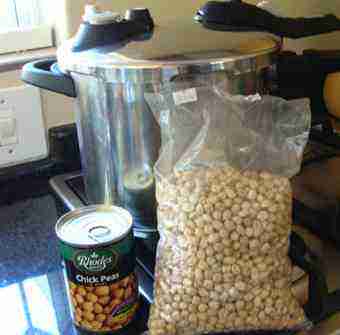
This page was last updated by Bernard Preston on 7th January, 2025.
You immediately have an important decision you must make; is convenience or price more relevant to you?
Secondly how inconvenient is it to buy dried chickpeas, soak and then cook them? And the corollary, how much costlier are the canned legumes and what chemicals are added to preserve them? Have salt and sugar been copiously tossed in?
And then an environmental question is added to the mix; are you going to recycle the can? There are also questions about the inner lining.
These are all important questions unless you have unlimited time and cash.
The inconvenience factor
Time is money we are told and so it is. Just how long does it take to prepare your dried chickpeas so that you are all set to make quick hummus, a legume soup or perhaps you want to add a cup of garbanzo beans to a meaty stew. Then there are falafel burgers.
I am lucky in that the little spice shop in the supermarket sells
dried chickpeas; but you may have to travel to find your source. I had
to for a while. Buy several packets
whilst you are there. I purchase about ten pounds at a time.
Then it takes perhaps two-minutes to open the bag, pour the chickpeas into a pot and fill it with cold water; not long I think you will agree.
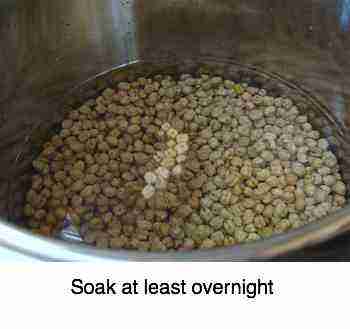
Done last thing in the evening, you can now doddle off to bed whilst nature does its work. Your garbanzo-beans will double in size so make sure you cover them with plenty of water.
Then in the morning you will
need to drain and rinse them a couple times; say three-minutes. Do not
pour the liquid, tempting though it may be onto your potted plants; it
contains a growth inhibitor.
Meantime you have put the kettle on. Once the peas are rinsed, still in your heavy-bottomed pot cover them with hot water and bring the whole to the boil.
This brings us to the second point about the time taken to boil your now engorged chickpeas. Do you have a pressure-cooker? If so then there is no more fuss; simply put the lid on. I still use plenty of hot water; it's amazing how much they absorbe.
Now choose the highest setting on the pressure-cooker, turn on the gas but reduce it when they are boiling; come back twenty-five minutes later and switch off the heat.
These new cookers are safe and amazingly efficient; they save time and money.
They go on cooking for the next ten minutes whilst the pressure slowly drops; do not rush the process. So it takes about three-quarters of an hour.
If you do not have a pressure-cooker then it takes about an hour and a half; and you do have to keep an eye on them. They tend to boil over; that is tedious.
My frank advice is to buy a modern stainless-steel pressure cooker; you will use it for many other foods, saving you much time. They cost around fifty to eighty dollars; never cook with aluminium utensils.
So using a pressure cooker, you have actually spent about ten-minutes fiddling about with the chickpeas. For the rest you can get on and do other things whilst they are soaking and boiling.
Now a couple more rinses are needed, say another three-minutes; then a few more dividing your cooked and drained chickpeas into half a dozen packets and popping them into the freezer.
So in all you have spent fifteen to twenty minutes and you have enough cooked and frozen chickpeas for the next couple weeks. Use them in all your meat stews and soups too. They are a great source of vegetable protein and fibre; and many important minerals and vitamins.
There is one more inconvenience factor; you won't cut your finger on the can like I did. But then you might burn your thumb whilst cooking your peas; call them garbanzo-beans if you like.
Actually they are neither peas nor beans but we will not fuss about that here. Just think of them as the world's most popular, cheap protein.
The price factor
Prices will vary in your country, but I suspect the principle will be the same. The value of the Rand has plummeted in 2020; when it stabilises I will rewrite these figures.
1. Canned garbanzo beans
A 410g can costs R10 in South Africa; that's about a dollar.
Drained, the can yields 252g of chickpeas.
We are only looking at ballpark figures, so lets say that a 400g can yields 250g approximately.
2. Dried garbanzo beans
A 1000g packet of dried peas costs R23; about $2.30.
Soaked, cooked and drained that yields 2500g of chickpeas; that is 15 cups.
Summary
Canned chickpeas cost $1.00/250g or 40c per 100g
Dried and cooked chickpeas cost $2.30/2500g or 9.2c per 100g; say 10c once you've added the cost of heating.
Canned chickpeas cost four times as much.
Cost of hummus
In South Africa a commercial hummus costs around R17.00 / 100g.
Our authentic hummus recipe costs R2.60 / 100g to make. Six times as much if you buy it from the supermarket; and a lot more at a deli, methinks.
In the States it would cost around $1.40 / 100g.
The well-being factor
Cooked garbanzo-beans go off very quickly, so the manufacturers when canning them add two preservatives; sugar and salt.
In your own fridge, be sure you eat your quick hummus within three days. Make less rather than more to begin with. The excess goes into our low GI bread dough and will enrich any soup. Can you believe that Western countries waste thirty percent of their food? Do not be part of it.
That is just another consideration in your canned versus dried chickpeas debate; I am trying to reduce all the hidden chemicals the food industry loves to add to their products.
Chickpeas incidentally are the very richest source of vitamin B6, one of the essential four in preventing frailty syndrome; the rapid and premature decline of strength and vitality. Do you know what the other three are? Is granny getting them from her food?
Is the prevention of disease rather than treating it after the fact part of your life-philosophy?
Foods that lower cholesterol
Foods that lower cholesterol naturally to obviate the necessity to daily consume nasty statins include oats, garbanzo-beans and apples. So are you going to consider canned versus dried chickpeas, as they are also known?
Only probably if you are going to use them regularly; we prepare quick hummus every single week for example. It's the making of an otherwise boring green salad.
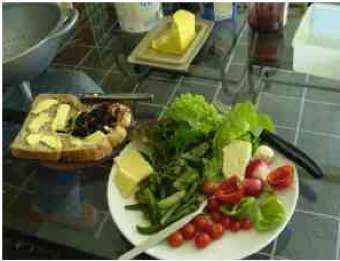
All salads, fruits and legumes will help lower your cholesterol; whole grains like oats, nuts and omega-3 rich foods too. Apples are particular good.
A simple regimen might consist of:
Breakfast
- An oats muesli with prunes and yoghurt + one or two fresh fruit and three freshly-cracked walnuts, almonds or pecans.
- Perhaps add a fillet of salmon on whole-wheat toast using low GI bread.
- Better still especially if you're banting, Eggs Florentine; a bed of spinach instead of the toast.
Lunch
- A large mixed salad with a good dollop of quick hummus, lemon juice and olive oil. Add a piece of chicken or better still smoked mackerel, herring or pilchard.
- Curried green beans thickened with chickpeas always contribute to the luncheon platter.
- One slice of low GI bread, butter and cheese or jam will finish off the meal.
Dinner
- Start with a consomme of broccoli or this chickpea soup recipe.
- Mixed vegetables, sweet potatoes or brown rice and salmon.
- Fruit pudding such as stewed apples or pears with a little cream. You've earned it if you are enjoying this kind of food.
How is hummus made from scratch?
- Soak the chickpeas overnight; pressure cook for 25 minutes.
- In a tub with a sealable lid, place water, a whole lemon and TBSP of tahini.
- Then add garlic, parsley and a little cumin.
- Use a stick blender.
- Now add a cup of the freshly-cooked chickpeas and olive oil; blend again.
- You're done; getting the balance of lemon and garlic right for your taste buds is the trick.
Find all the details at how to cook and freeze dried chickpeas.
Useful links
- Helens 15 euro salad
- Smoked salmon dip recipe
- Read more about chickpeas from WHF. (offline currently)
- Lysine in chickpeas
When browsing use right click and "Open Link in New Tab" or you may get a bad gateway signal.
Newsletter
Our newsletter is entitled "create a cyan zone" at your home, preserving both yourself and Mother Earth for future generations; and the family too, of course. We promise not to spam you with daily emails promoting various products. You may get an occasional nudge to buy one of my books.
Here are the back issues.
- Lifestyle and ideal body weight
- What are ultra-processed foods?
- Investing in long-term health
- Diseases from plastic exposure
- Intensive lifestyle management for obesity has limited value
- A world largely devoid of Parkinson's Disease
- The impact of friendly bacteria in the tum on the prevention of cancer
- There's a hole in the bucket
- Everyone is talking about weight loss drugs
- Pull the sweet tooth
- If you suffer from heartburn plant a susu
- Refined maize meal and stunting
- Should agriculture and industry get priority for water and electricity?
- Nature is calling
- Mill your own flour
- Bake your own sourdough bread
- Microplastics from our water
- Alternative types of water storage
- Wear your clothes out
- Comfort foods
- Create a bee-friendly environment
- Go to bed slightly hungry
- Keep bees
- Blue zone folk are religious
- Reduce plastic waste
- Family is important
- What can go in compost?
- Grow broad beans for longevity
- Harvest and store sunshine
- Blue zone exercise
- Harvest and store your rainwater
- Create a cyan zone at your home
Garbanzo-Bean Recipe
Once you've got all the ingredients ready, it takes me a timed four-minutes to make quick hummus, also known as this garbanzo-bean recipe; central to your decision to regularly use this wonder food for lowering cholesterol is the canned versus dried chickpeas debate.
Quick hummus
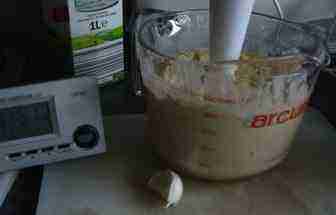
Most chickpeas probably are used in quick hummus, falafel or simply tossed into a meaty stew; there are of course many recipes.
Having made your decision about canned versus dried chickpea you are now ready to use this exceptionally nutritious legume in your food several times a week. We make our quick hummus recipe regularly. A couple of tablespoons provide the added protein that lowers the GI of our homemade bread.
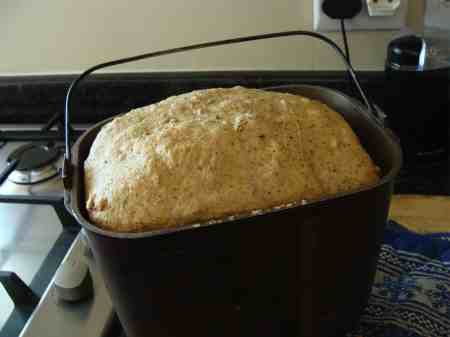
Just add a couple tablespoons of your quick hummus and a slosh of olive oil and you have low GI bread. It takes less than ten minutes to prepare the dough, and five-hours to bake. Add a scoop of sourdough-starter and you can enjoy the best loaf in the world without guilt.
Neoplasms
There are new reports out recently that the plastic used to line many cans has been found to cause neoplasms; the bisphenols are "endocrine-disrupting chemicals."
Is just one more reason to soak and cook your own dried chickpeas. Get that pressure-cooker if you're serious about making our nutritious hummus recipe; this one is extra smooth, and still takes only four minutes to prepare.
Canned versus dried chickpeas
So what's your decision? The canned versus dried chickpeas debate only makes sense once you've planned to eat them regularly; and if you have got a pressure-cooker.
A hot-box works too.
Induction cooking
A neat little tabletop induction stove is a must for energy-efficient cooks; it boils food much faster than gas and uses half the electricity of a conventional electrical hob.
Interestingly the good wife was very against it, just another appliance, but I notice she uses the induction-stove all the time now; it is so easy to clean too.
It also means that I can cook for nothing, using the solar generator, because the kilowatt-rating is so much lower than a conventional stove; the inverter takes this little guy right in his stride.
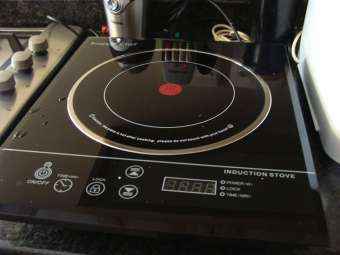
You can now buy them as a conventional hob, also with a gas-ring; we are considering it.
Did you find this page interesting? How about forwarding it to a friendly book or food junkie? Better still, a social media tick would help.
- Bernard Preston homepage
- Hummus
- Canned Versus Dried Chickpeas
Address:
56 Groenekloof Rd,
Hilton, KZN
South Africa
Website:
https://www.bernard-preston.com